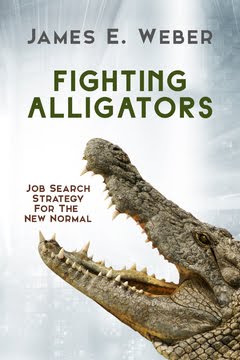In order to get a
company perspective, I talked with one of
my clients this week. This VP of Human
Resources and I had worked for the same company in the early 1990’s. That company had a model onboarding program,
so I was not surprised to learn of my client’s commitment to effective onboarding.
My client, let’s call
him Mark, told me that they viewed onboarding as a process, not an event. They use a six month period to assimilate the
new hire into the culture, her role, and her team. He said, “the Devil is in the details.” It is a well-planned
program run by their training department.
That was an interesting revelation.
But it makes sense. He went on to
say that the new hire’s supervisor is involved in the process to include
regular interaction. The new hire is assessed throughout the process which is
recorded on a balanced scorecard.
Mark told me that a new
CMO had joined the company that day. She
was beginning to go through the same process, starting on the shop floor. This first step is scheduled for six to eight
weeks. During this time, she will learn the business from the
ground up. The next phase is to shadow a
Regional Operations Vice President for eight to twelve weeks. She will see how the moving parts work together
in the field, especially how Sales, Operations, and Marketing personnel
interact.
The final step is to
spend time with her direct reports to understand how the business rolls up to
her level of responsibility. The
evaluation process includes a three hundred sixty degrees review. Mark is very
proud of their process and its results.
He said, “it is important to start
the new hire on the right foot.” He went
on to say that their home office turnover is very low, seven percent.” As I mentioned earlier, Mark and I had worked
for the same company years ago. Their
onboarding process was superb. It is no
surprise to me that he carried on the tradition with his current employer.
Mark went on to tell me that the onboarding plan is
customized to the new hire. A conference
call is scheduled prior to the new hire’s start date. It is a group conference that includes all
relevant parties. Adjustments are made
along the way to accommodate for transition issues like house hunting trips if
relocation is involved. At the end of
the process, the new hire debriefs with her Superior.
My client’s program is
a textbook example of onboarding the new hire most effectively. Probably the most effective part of the
process is the significant amount of time given to shadowing key personnel in
the field. Not only does the new hire see what gets done they also become immersed
in the culture. They learn the company’s
philosophy, values, and norms. They learn about the formal power structure as well as the informal power
dynamics of the firm. The latter may
prove to be very important to the new hire’s success.
Successful
onboarding programs think of the new hire as a customer. Their question is.“ how would you deliver
great service to this customer?” A key
component of great customer service requires monitoring the process and the
evaluation of the customer’s effectiveness using the product. My client’s program closely follows this
model. Additionally, by placing the
responsibility for onboarding with the training department they ensure that
accountability is optimized.
If the
employer believes that onboarding is critical to the new hire’s success, then
it needs the appropriate emphasis. If
the employer lacks the resources internally, it may be worthwhile to consider
an outside resource to guide the process.
Thank
you for visiting my blog.
I hope
you enjoyed my point of view and would like to receive regular posts directly
to your email inbox. Toward this end, put your contact information on my
mailing list.
Your feedback
helps me continue to publish articles that you want to read. Your input
is very important to me so, please leave a comment.
Jim
Weber, President
New
Century Dynamics Executive Search




